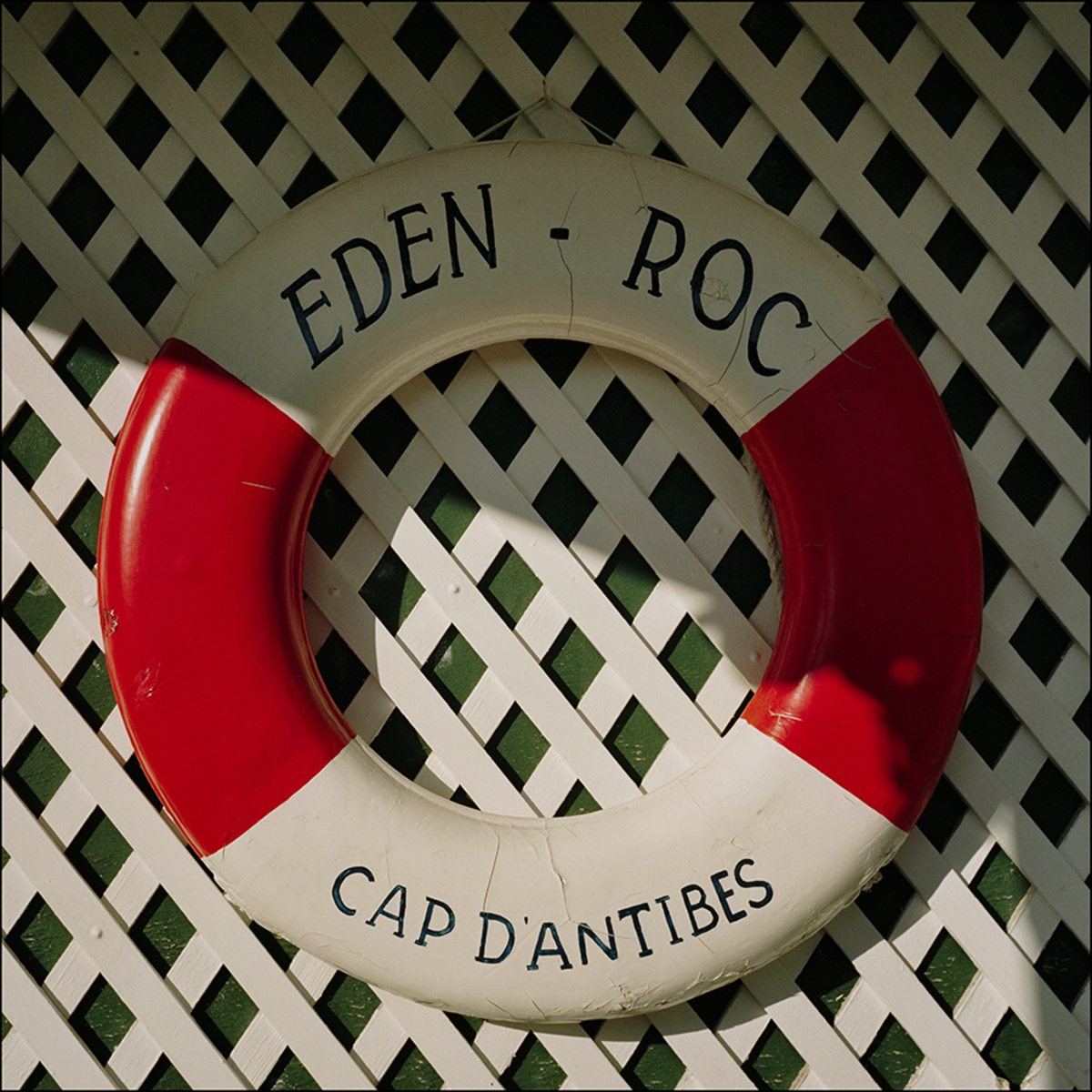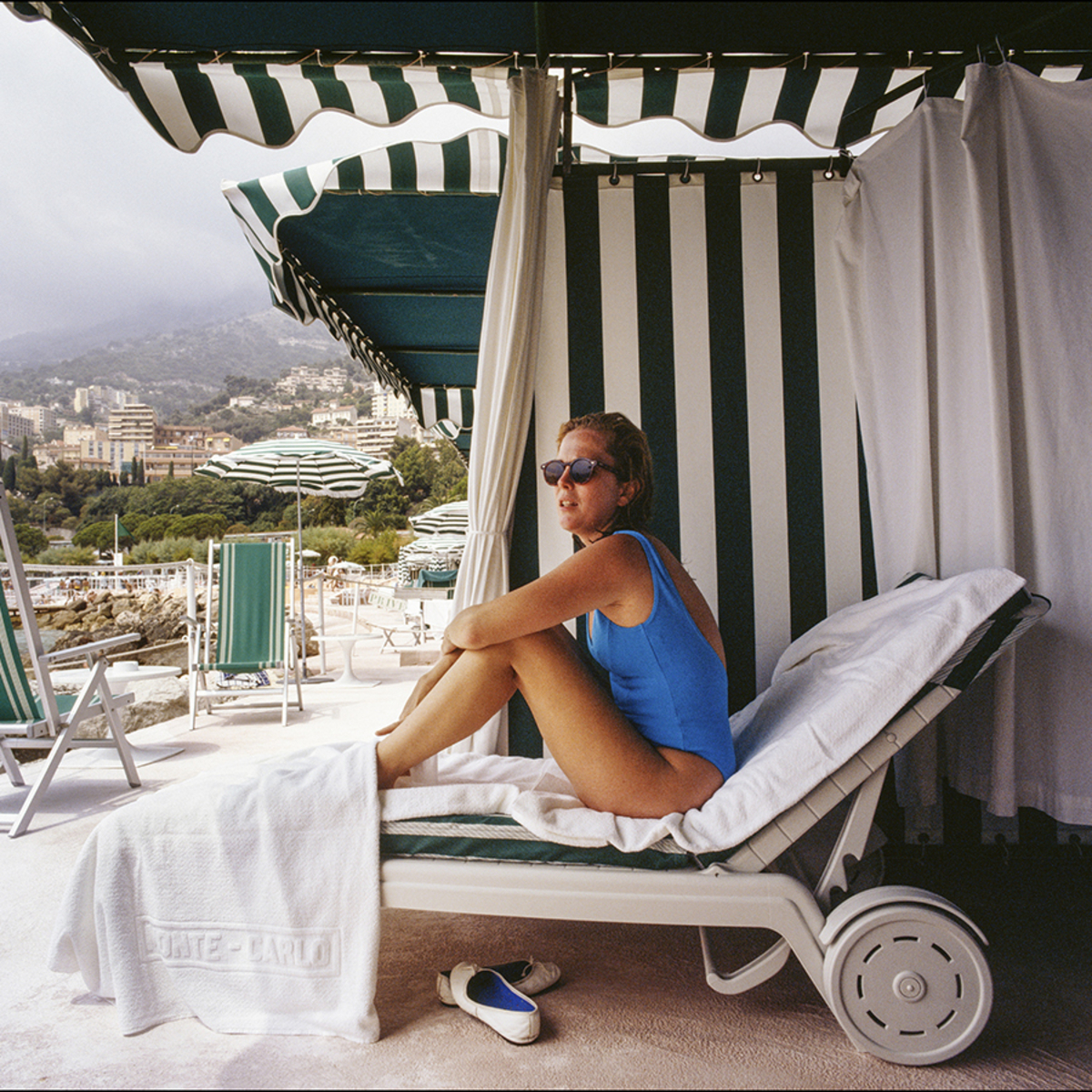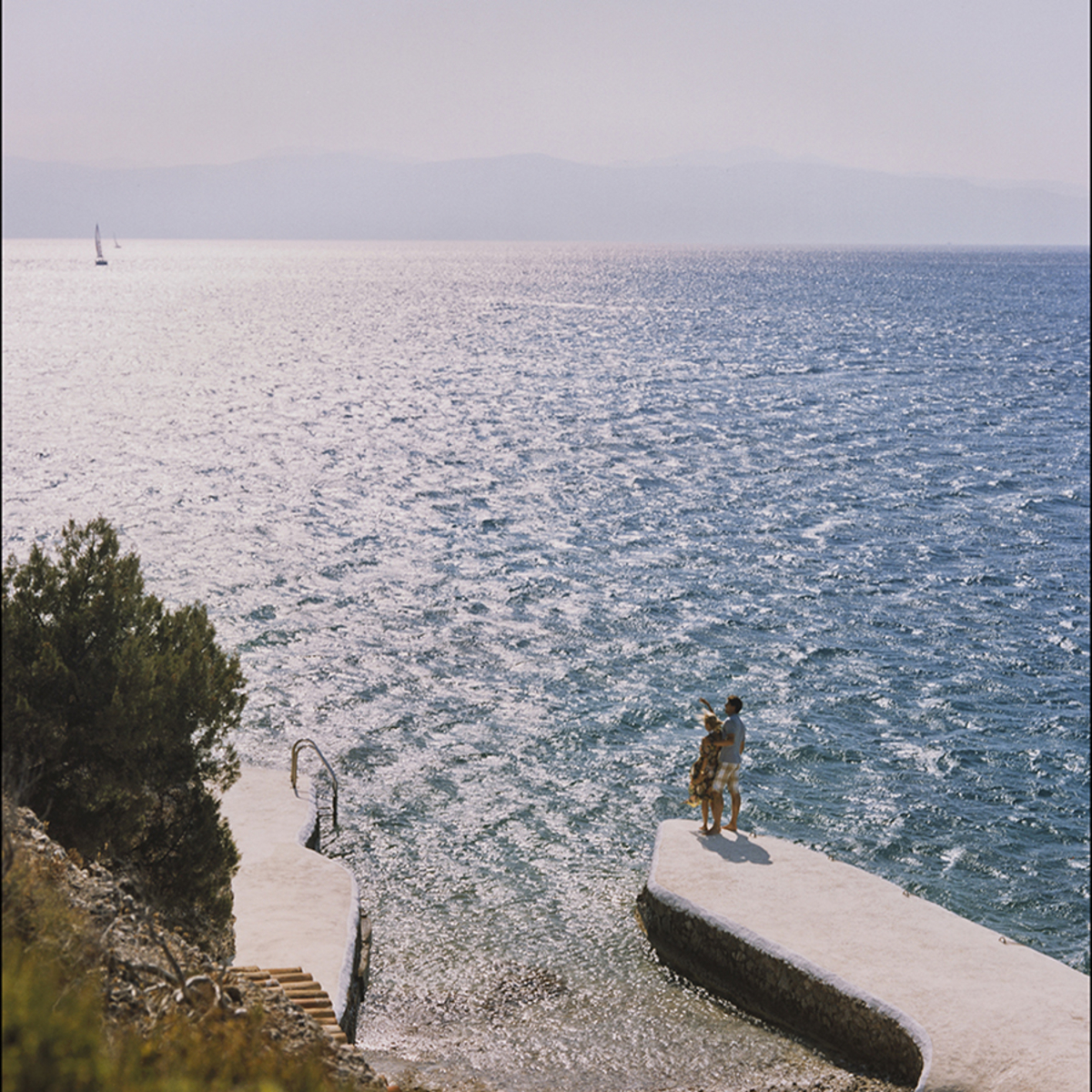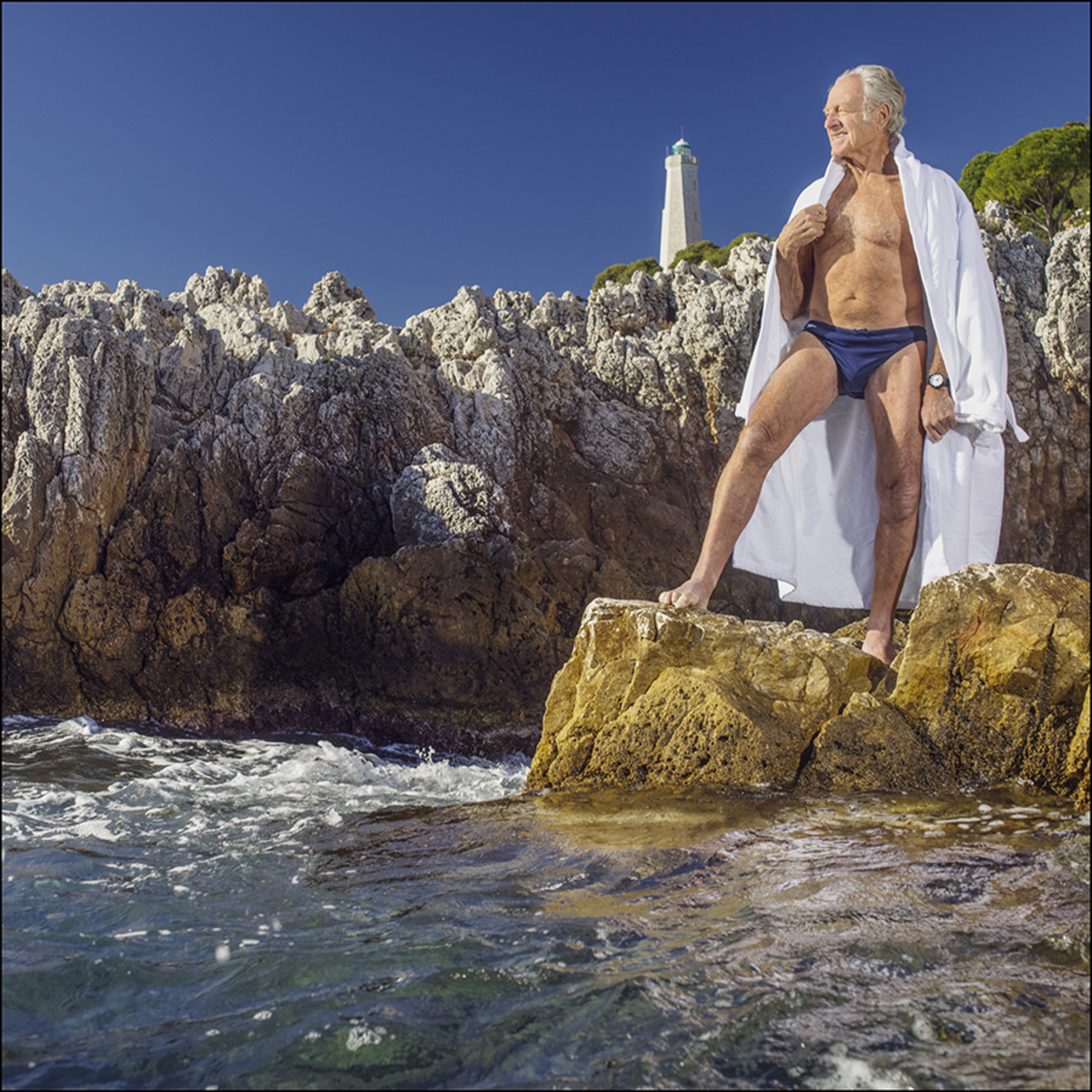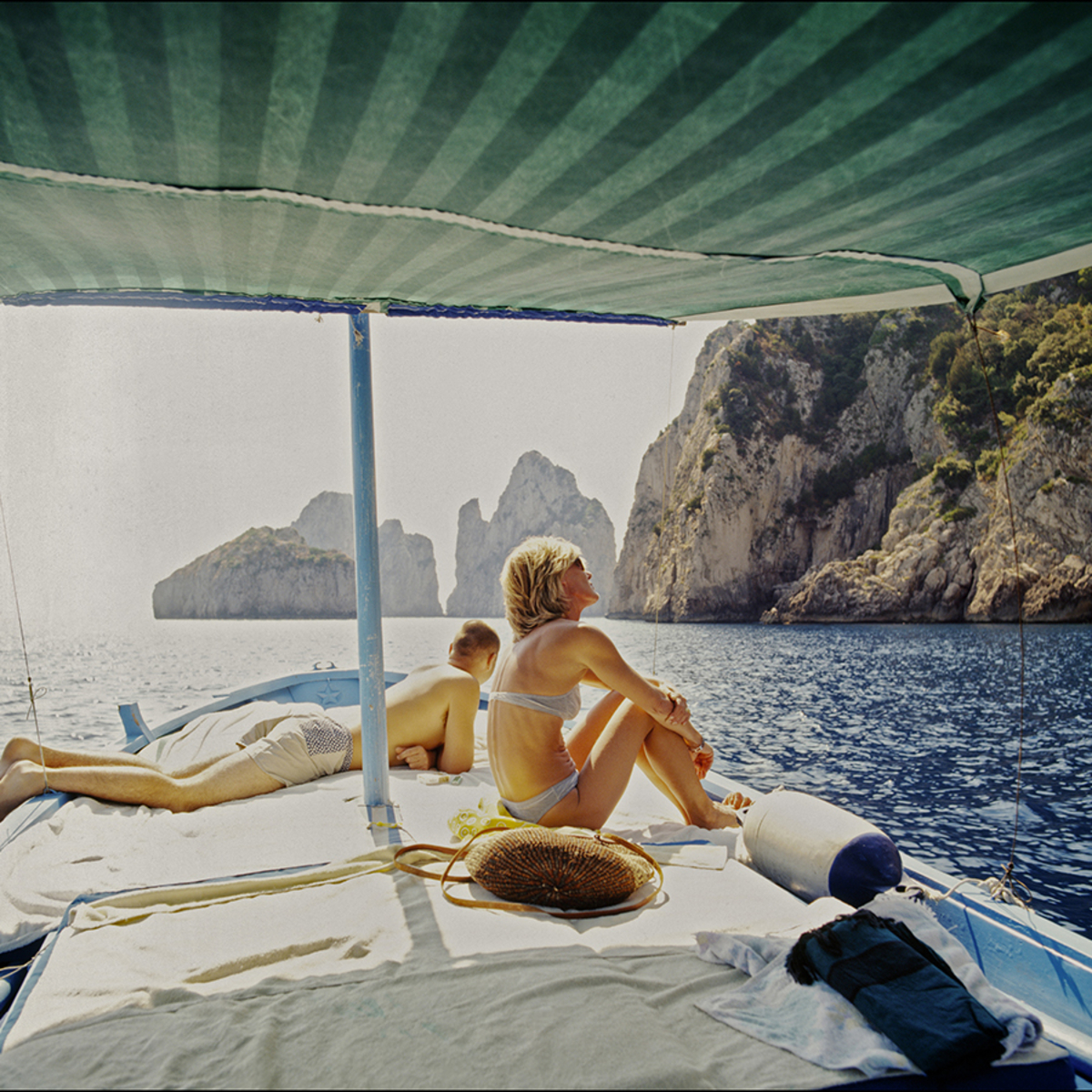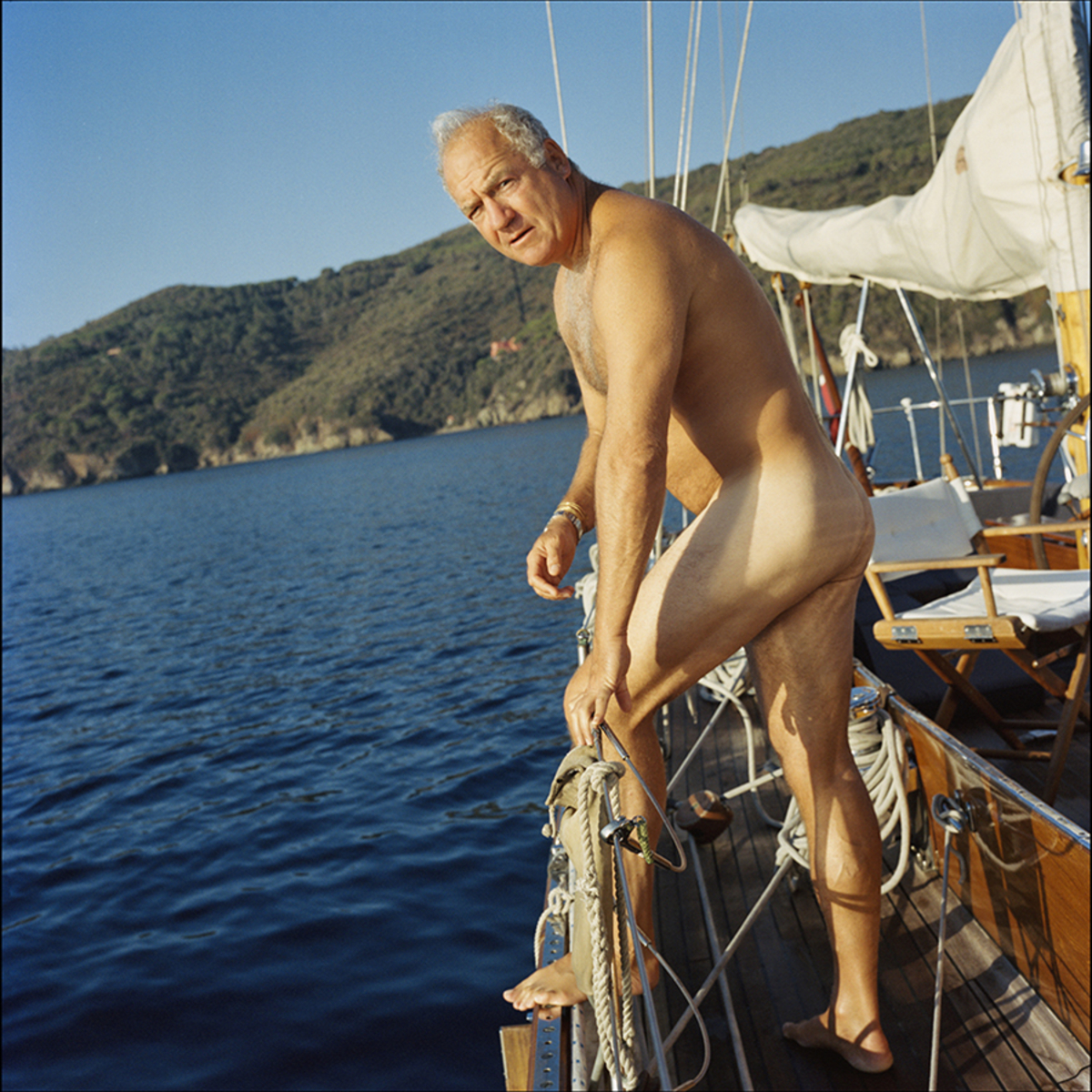There is swimming, and there is ocean swimming, and then there is swimming in the Med. While the Mediterranean represents a scant .7 percent of the ocean surface, globally speaking, the sea and its beaches receive a disproportionate share of our attention. In France, in particular, the country’s beaches serve as a cornerstone of national culture. The sacrosanct August vacation, when throngs of Français from all walks of life frolic in the sand under a soleil de plomb, is considered to be an inalienable right. Where else do liberté, égalité, and fraternité mix and mingle quite so nicely?
Countless artists have romanticized and immortalized the Med—Matisse, Monet, and Dufy most memorably—but leave it to the filmmakers to turn its waters into a quasi-sexual object of desire. Is it even possible to grace the beaches of St. Tropez without recalling Brigitte Bardot’s coastal ravishing in Roger Vadim’s And God Created Woman? Surely there was a stampede of vacationers to the Riviera in the wake of Otto Preminger’s Bonjour Tristesse. (If it escapes memory, fear not. Not much happens except for a lot of sea bathing by Jean Seberg and Deborah Kerr.) In Contempt, Jean-Luc Godard’s retelling of Homer’s Odyssey, Bardot’s Penelope-esque Camille signifies the end of her marriage by diving headfirst into the waters off of Capri’s Casa Malaparte. And more recently, Julia Stiles’s sleuthing Georgina Clios, who is plucked from the sea by a dashing businessman in the television drama Riviera. If Mediterranean beaches are crawling with sunseekers, we have the enduring power of cinema to blame.
But the sea itself remains as endlessly appealing—and bereft of humanity—as ever. Enter the long, leisurely swim, which is one of photographer Jonathan Becker’s most beloved pursuits. (Not so coincidentally, Becker’s late father, the Janus Films impresario William Becker, cavorted annually at the Cannes Film Festival in the 60s and 70s. The elder Becker, says his son, also served as a swimming instructor for the navy in Guam during World War II.)
“Swimming is one of the few things I do well,” he says with a laugh. In the early 80s, he began traveling to visit the celebrated photographer Brassaï in Èze, and over the intervening decades Becker has frequented the Med’s most idyllic swimming spots—many of which he has documented through photography. While these places lend themselves nicely to the proverbial dip, they are even better suited for a more robust outing. “I consider a long swim to be two and a half miles,” declares Becker. “A really long one is five, but that’s too long. It takes forever.”
Here are the Med’s very best swimming spots—according to Mr. Becker.

Eden-Roc
“Antibes in the chop, with all the antique aquatic gymnastic hoops, is great fun,” says Becker of this sunny, on-the-radar spot at Hotel du Cap-Eden-Roc.
The Monte-Carlo Beach Club, in Monaco
“Many of the Monegasque principality’s businesses fall under the wonderful title of Société des Bains de Mer, so, in a sense, Monaco is an entire country devoted to sea bathing. The vast seawater pool at the Monte-Carlo Beach Club, with its high-diving board, is one of only three or four ‘swimming’ pools in all the world I do like for swimming.”
Porto Heli, Greece
“The Greek islands have the most amazingly transparent water in the Med. Anytime I’ve been there, I marvel at it. Best swimming anywhere, especially off a boat near Porto Heli. The king’s boat, ideally. Oh, I’m just being grand.”
Da Luigi ai Faraglioni, in Capri
“A simple lunch and all-day swimming here, where it’s not too obviously social. For long swims, or to go through the big hole in the rock, you’d best be accompanied by a tender to fend off speedboats. That’s true almost everywhere these days.”
Cap Ferret
“On the Atlantic coast, west of Bordeaux, there are glorious sea dunes, and much more challenging sea at times. There are big waves here, like in Biarritz.”
Saint-Jean-Cap-Ferrat
“There’s a great long swim from Paloma Beach around the peninsula to Anse des Fossettes—about a kilometer, but maybe even a mile. I had a little boat off of Cap Ferrat for a while, but it kept sinking. It had a beautiful slip under La Voile d’Or, but the third time I came back and found it on the bottom again, I said, ‘That’s where she’s going to live.’ I went looking for her a couple of years ago, but I couldn’t see her
anymore.”

